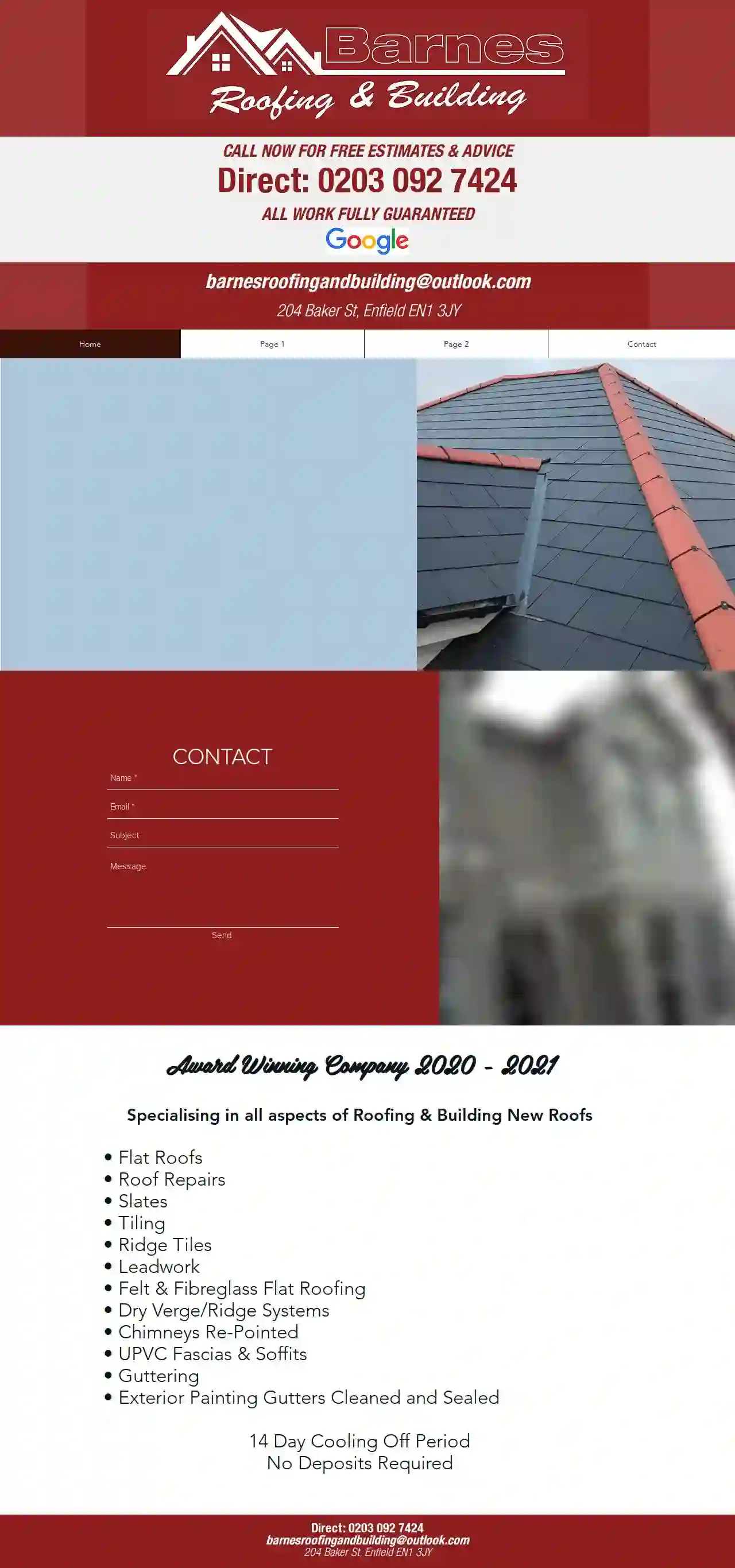Rubber Roof Installers Islington
Find Rubber Roof Installation in Islington
Get up to 3 EPDM Roof Installers quotes for your project today! Compare profiles, reviews, accreditations, portfolio, etc... and choose the best deal.

Barnes Roofing & Building
4.39 reviews204 Baker St, Enfield, EN1 3JY, GBAward Winning Company 2020 - 2021. Specialising in all aspects of Roofing & Building New Roofs. We offer a wide range of services including Flat Roofs, Roof Repairs, Slates, Tiling, Ridge Tiles, Leadwork, Felt & Fibreglass Flat Roofing, Dry Verge/Ridge Systems, Chimneys Re-Pointed, UPVC Fascias & Soffits, Guttering, and Exterior Painting. Gutters Cleaned and Sealed. 14 Day Cooling Off Period. No Deposits Required.
- Services
- Why Us?
- Gallery
Get Quote
London Platforms Roofing - High Level Roof Repair | 24/7 Emergency Roof Repair
4.229 reviews26-28 Burleigh Road, Enfield, EN1 1NY, GBLondon Platforms Roofing is a roofing company that provides a wide range of domestic, commercial, and industrial roofing solutions across London and the Home Counties. We pride ourselves on providing our customers with high-quality roofing services, using our unique fleet of lorries with cherry pickers to reach and fix roofs up to 35 meters high. Our team is passionate about roofs, knowing exactly what it takes to ensure quality and restore trust in the roofing industry.
- Services
- Why Us?
- Accreditations
- Gallery
Get Quote- E.
E.J. Roberts Roofing Ltd
3.510 reviewsLondon, GB- Services
- Why Us?
Get Quote - Th
Thames Roofing Group Ltd
3.76 reviewsLondon, GB- Services
- Why Us?
Get Quote - Pr
Property Group Roofing & Building Ltd
49 reviewsLondon, GB- Services
- Why Us?
Get Quote - AR
ARK Roofing and building Ltd
412 reviewsLondon, GB- Services
- Why Us?
Get Quote - LD
LDN Roofing Solutions
3.418 reviewsLondon, GB- Services
- Why Us?
Get Quote - Oa
Oakley Roofing And Guttering Ltd
3.65 reviewsLondon, GB- Services
- Why Us?
Get Quote - Tr
Tr Roofing
511 reviewsLondon, GB- Services
- Why Us?
Get Quote - X
X L Roofing
56 reviewsLondon, GB- Services
- Why Us?
Get Quote
Over 12,314+ Roofers on our platform
Our roofing experts operate in Islington & beyond!
Roofyng.co.uk has curated and vetted Top Roofers near Islington. Find the most reliable business today.
Rubber Roof Installation FAQs
- Sweep Debris: Remove loose debris with a broom or leaf blower.
- Prepare Solution: Mix mild detergent (designed for rubber roofs) with water according to instructions.
- Apply Solution: Use a soft-bristled brush or mop to apply the cleaning solution, focusing on dirt or algae buildup.
- Rinse Thoroughly: Rinse with clean water, ensuring no residue remains.
- Manufacturer's Warranty: Covers defects in the EPDM membrane itself, typically ranging from 10 to 30 years or more, depending on the manufacturer and the membrane's thickness.
- Contractor's Warranty: Covers the installation workmanship, usually for a shorter period, such as 1 to 5 years.
How do I find rubber roof installers in my area?
Can I install a rubber roof myself?
How do I clean a rubber roof?
What is the warranty on an EPDM rubber roof?
How do I find rubber roof installers in my area?
Can I install a rubber roof myself?
How do I clean a rubber roof?
- Sweep Debris: Remove loose debris with a broom or leaf blower.
- Prepare Solution: Mix mild detergent (designed for rubber roofs) with water according to instructions.
- Apply Solution: Use a soft-bristled brush or mop to apply the cleaning solution, focusing on dirt or algae buildup.
- Rinse Thoroughly: Rinse with clean water, ensuring no residue remains.
What is the warranty on an EPDM rubber roof?
- Manufacturer's Warranty: Covers defects in the EPDM membrane itself, typically ranging from 10 to 30 years or more, depending on the manufacturer and the membrane's thickness.
- Contractor's Warranty: Covers the installation workmanship, usually for a shorter period, such as 1 to 5 years.